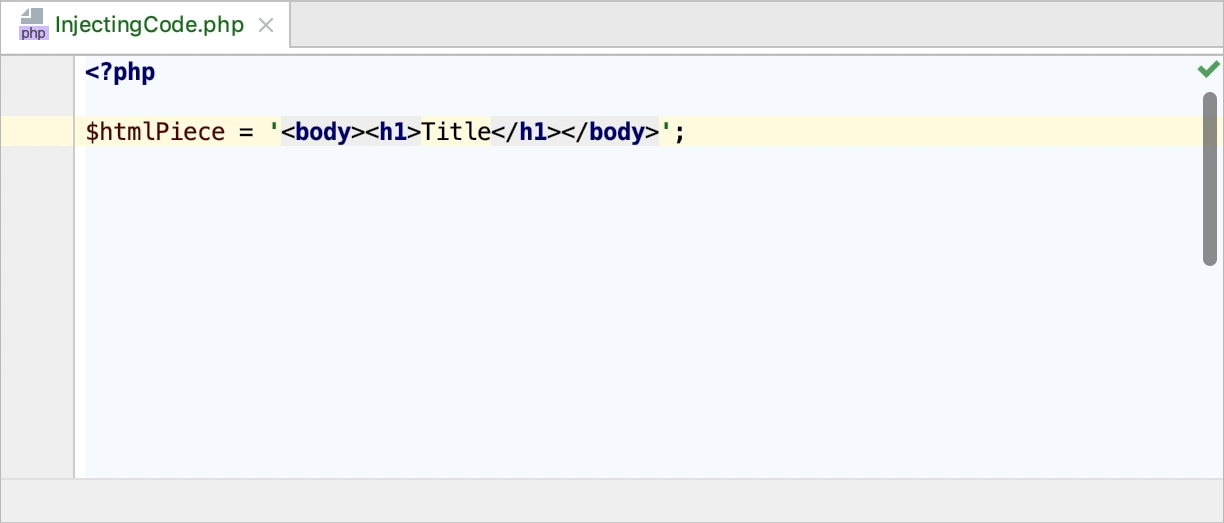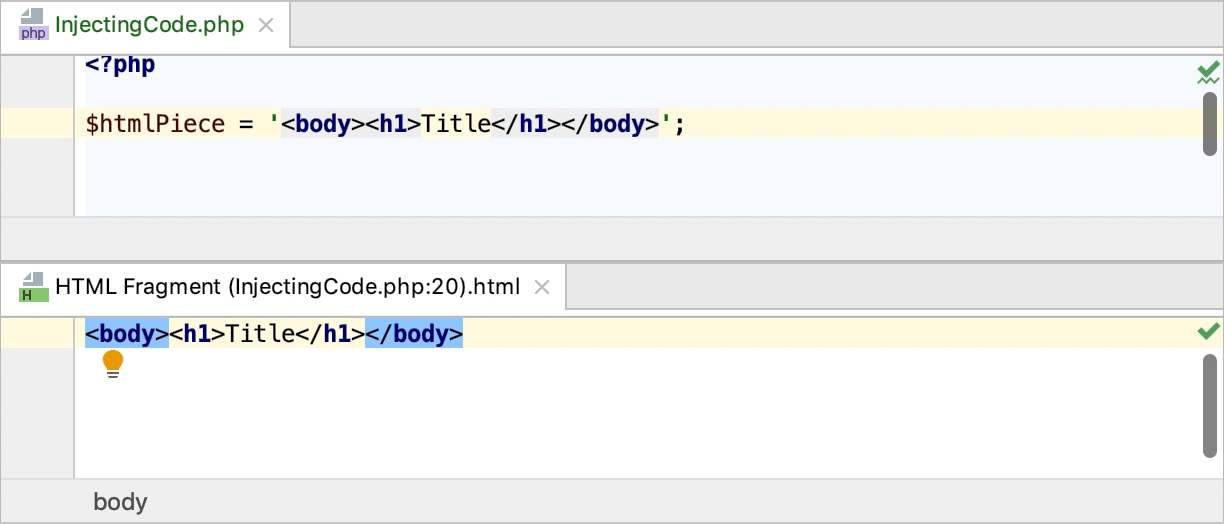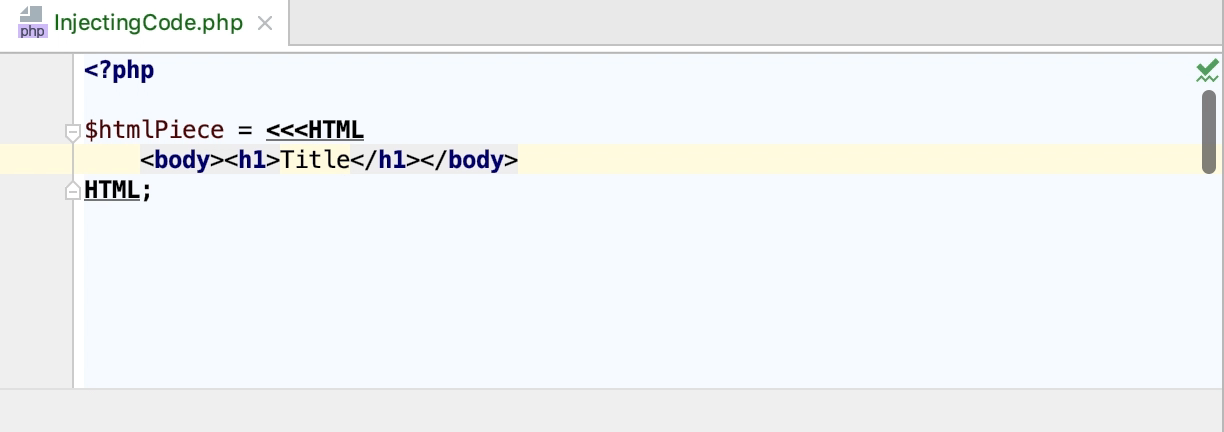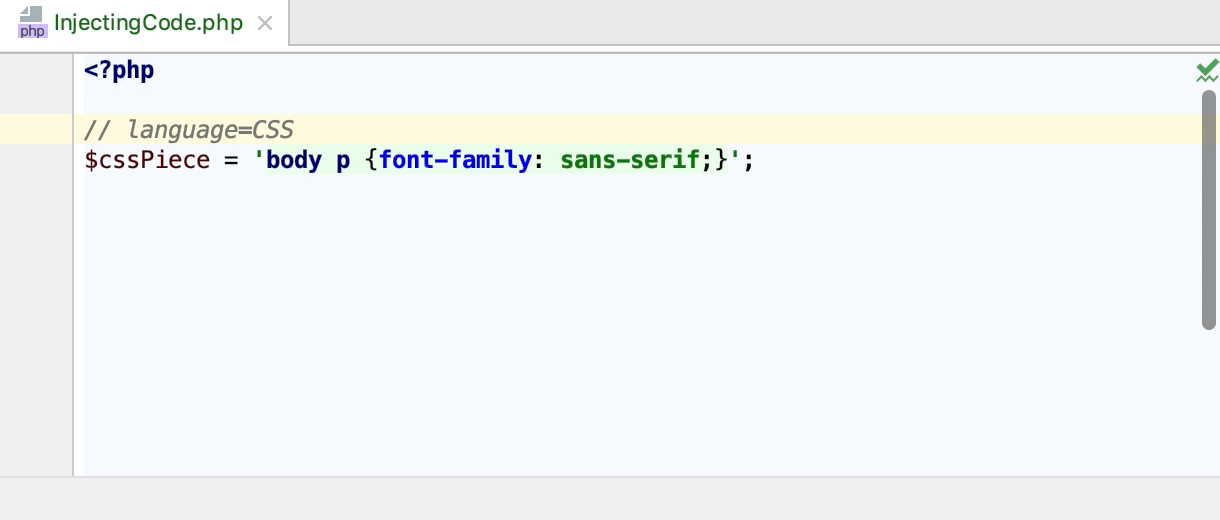Language injections
Language injections let you work with pieces of code in other languages embedded in your code. When you inject a language (such as HTML, CSS, XML, RegExp, and so on) into a string literal, you get comprehensive code assistance for editing that literal.
warning
Make sure that the IntelliLang plugin is enabled before you start working with language injections.
In the PHP context, you can use the special PHP dialect called Injectable PHP. This dialect is similar to PHP, with the exception for the <?php opening tag, which can be omitted. Injectable PHP can be injected into string literals manually, just as any other language. In addition, it is automatically injected into eval() calls and in Markdown fenced code blocks with the language identifier set to php.
Temporarily inject a language
Position the caret inside the string literal, tag, or attribute, in which you want to inject a language and press Alt+Enter (or use the intention action icon
).
Select Inject language or reference and choose the language you want to inject.
 Gif
Gif
Open a code fragment in the dedicated editor section
Position the caret within the injected code piece and press Alt+Enter (or use the intention action icon
).
Select Edit <language ID> Fragment.
PhpStorm will open a dedicated editor section for editing the code with the injected language. This editor provides full code assistance, including code completion, inspections, intentions and code style actions.
 Gif
Gif
Use the @lang annotation
In the PHP context, you can also use the @lang <language_ID> annotation to inject a language.
Provide the
@lang <language_ID>PHPDoc annotation preceding the target string literal. Language IDs are generally intuitive, for example SQL, RegExp, XML, HTML. Gif
Gif
Inject a language inside a nowdoc/heredoc string
In the PHP context, you can inject a language inside nowdoc/ heredoc strings.
Start typing a heredoc/ nowdoc string and set the marker to the language ID you want to inject. Language IDs are generally intuitive, for example SQL, RegExp, XML, HTML.
 Gif
Gif
Use language injection comments
Add a blank line before the target string literal, and type the following comment:
// language=<language_ID>For comments, use the syntax of the language you want to inject. Language IDs are generally intuitive, for example, SQL, RegExp, XML, HTML.
 Gif
Gif
Cancel injections
Position the caret at the code fragment and press Alt+Enter (or use the intention action icon
).
Select Uninject language or reference.
To cancel a language injection, you can also delete the injection comment or annotation.
Configure injection rules
You can configure language injection rules on the Editor | Language Injections page of the IDE settings Ctrl+Alt+S.
All pre-defined injection rules are configured for the Built-in scope. In other words, they are global (and therefore available in all PhpStorm projects). Custom rules can be configured for the IDE or for one project only. To change the scope of custom injections, use the .
To configure custom injection rules, click to add a new rule, or copy a predefined rule and change its settings.